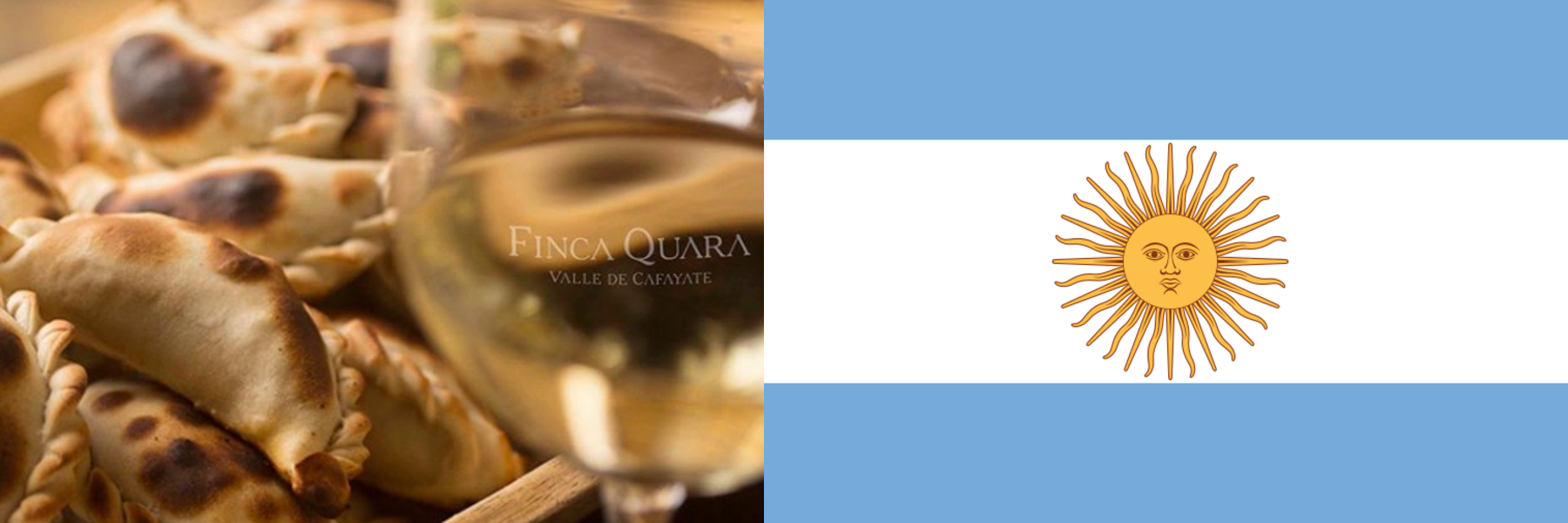An oenophile's continued ramblings on the latest #wine discoveries from #Argentina. Another country where winemaking is now becoming more regional & site specific and where winemakers are breaking down barriers in their choices of grape varieties and reaching for new levels of excellence. I'm hardly scratching the surface with the growers and producers featured in this blog!
What about the Rhone-style wines from Ver Sacrum?
The beautiful rosé from Susana Balbo?
Patagonia's Aniello making a Jura-style Trousseau and a "white" Pinot Noir?
Salta's extreme Vallisto wines using Barbera & Tannat varieties?
Bonarda from Nieto Senetiner & San Juan's Cara Sur?
Or the sparkling, "methode-champenoise" wines from both Malpenzado and Zuccardi?
So many wines... so little time.
But, more importantly:
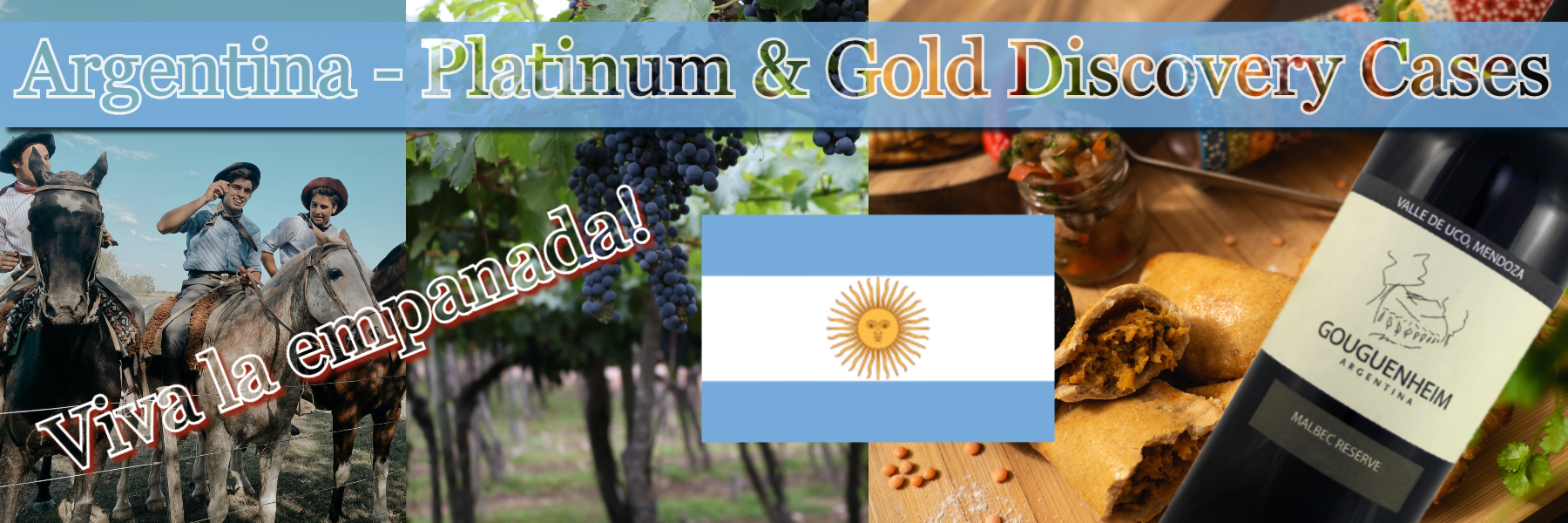
“Viva la empanada!” - A very important statement indeed. Argentina’s version of the humble, but delicious, Devon/Cornwall pasty, the “Empanada” is the ideal snack to go with a bottle of Malbec.
Whether using beef, or the vegetarian cheese and spinach option, you can’t go wrong. It’s good enough for gauchos and high-society dinners. It’s a real all-rounder!
From personal experience, a decanted-straight-from-the-vat, 1977 Weinert Malbec “Estrada” with assorted empanadas was a fitting end to a wonderful visit in Argentina over 20 years’ ago. That Malbec was the highlight of a style of wine that almost nobody in the UK had tasted. At the time, it was sold in a few top Swiss restaurants (the winemaker is Swiss) for 250 CHF a bottle. Amazingly, everyone on the visit was given an unlabelled, hand-bottling to take back home. Consumed long ago, the same wine, today, is now worth £900! That would buy a lot of pasties…
My point? Malbec hit the UK with mass market £5 wines. They went down a storm with the wine buying public and a “new favourite” was born. Out went the Australian Shiraz and Chilean Merlot wines that had, unfortunately, gone from being great value, interesting wines, to just price-driven brands. The wine to get you noticed was now coming from Argentina.
Remarkably, in a the space of a few short years, £10 bottles were appearing on the shelves; people bought them…rapidly followed by £20 bottles; there was a growing market for these, too. Then the “Icon” wines at £50 started being exported. This is getting into the “hand-selling” level of pricing and the quality has to match. According to the critics, worldwide, this is happening, as there are now numerous producers making wines regularly scoring 95+ points, vintage after vintage, and the prices are now hitting £100+ for the very best of them! Zuccardi’s “Finca Piedra Infinita”(Altamira, Uco Valley, Mendoza), Catena Zapata’s Adrianna “River Stones”(Gualtallary, Uco), Per Se’s “Iubileus” (Gualtallary, Uco), Colome’s “Altura Maxima” (Calchaqui, Salta) and Noemia’s “Noemia” (Rio Negro, Patagonia) are just a few of the Malbec wines which achieve the world’s accolades for their ultimate quality, with prices to match!
But Argentina is not just about Malbec…
The country is currently the world’s fifth largest producer of wine with half a million acres under vine. You might be surprised to know that Malbec has only 18% of the vines planted across the land. It’s number one, but not by much. Who’s ever seen a wine from Cereza, the second most planted variety?
1/ Malbec – 18%
2/ Cereza Rosé (a pink skinned grape) – 13%
3/ Bonarda – 8%
4/ Criolla Grande – 7%
5/ Cabernet Sauvignon – 7%
6/ Syrah – 6%
7/ P.X. (white variety) – 5%
8/ Torrontes Riojano (white variety) – 4%
9/ Moscatel Rosado (pink variety) – 3%
10/ Chardonnay (white) – 3%
11/ All others (including Tempranillo, Garnacha, Monastrell, Mencia, Pinot Noir, Cabernet Franc, Merlot, Petit Verdot, Tannat, Nebbiolo, Corvina, Ancellotta, Semillon, Viognier, Chenin Blanc, Riesling, Sauvignon Blanc, Albarino) – 26%
A huge selection of grape varieties, but many wine lovers won’t look beyond Malbec. They’re seriously missing out!
Thankfully, many fantastic, new wines are being produced by quality-minded growers; some reverting to using the original “native” varieties such as Criolla (actually, brought in by the Spanish missionaries in the 16th century) and others, using a plethora of European varieties.
Some of the greatest wines in Argentina actually do NOT use Malbec.
Bodega Aleanna has their perfect 100 point rated, single vineyard, Gualtallary “Gran Enemigo” made from Cabernet Franc; in Patagonia, Chacra is producing some of the finest Pinot Noir anywhere in the world (“Cincuenta y Cinco”, rating 98 pts) and in Mendoza, Catena Zapata has, along with many great reds, their “White Stones” Chardonnay (also 98 points from the Wine Advocate). One of Tim Atkin MW’s favourite whites from Argentina is the Alandes “Paradoux Blanc” by Karim Mussi. A mineral-driven, oak fermented blend of Semillon/Sauvignon Blanc (Rated 95 points).
Whatever the grape variety used, in the never ending desire for quality, altitude is the factor driving searches for better vineyard sites, with cooler temperatures being sought. High altitude has the effect of keeping more acidity in the wines due to the large diurnal temperature range, making them taste fresher and more elegant than those made at low levels. Over time, it’s also been discovered that high altitude vineyards located nearer to the Andes mountains experience more intense sunshine (UV) and the physiological ripening of the tannins in the grape is changed. When picked, the fruit is better balanced and will, naturally, give a higher quality wine, BUT you still have to be a good viticulturist and winemaker. Vineyard location is a major factor, but great quality doesn’t happen on its own!
Mendoza’s vineyards are mainly between 1000m-1500m above sea level, with the highest areas (Uco Valley) at around 1800m. When moving north to Salta, the majority are located at around 2000m, with exceptional vineyards at 3000m. That’s very high for growing anything! In Patagonia, the vineyards are sited much lower (but further south), at around 200m-300m, along the Rio Negro valley. To put it into context, most European vineyards barely get above 800m.
Regionally, for viticulture, Argentina is divided into the central area of #Mendoza (95% of all cultivated vineyards are here), the northern province of #Salta (3%) and the area of #Patagonia (2%) to the south of Buenos Aires.
Mendoza is all about the reds: #1 is Malbec, #2 is Bonarda and #3 is Cabernet Sauvignon. Syrah (in San Juan) is #4 and Tempranillo comes in at #5. Some spectacular Chardonnay keeps the white-wine drinkers happy.
First, it was simply “Mendoza”. Then we were introduced to sub-regions such as Lujan de Cuyo, Agrelo, Valle de Uco and San Rafael. Now we have names like Altamira (producing very minerally wines from rocky, limestone soils), Vista Flores, La Consulta and Tupungato on the labels. Each brings us closer and closer to more specific locations with, finally, even smaller areas within them, such as Gualtallary and Chacayes containing single vineyards. It’s now as complicated as Bordeaux and Burgundy where you have to know your producers if you want the best wines!
#Gouguenheim are long established on Frazier’s list with their wines being top sellers, particularly the Malbec Reserve. Father & son team, Patricio and Santiago, are the driving force here in developing the wines for worldwide markets. The UK cannot get enough of these!
Gougenheim Malbec "Reserve” - Tasting Note: A deep, purple colour with black hints. There’s punchy Malbec fruit, but with a refined and classy texture. Full bodied, with a good concentration of cherry flavours, the eight months in French and American oak gives a touch of tannins that will benefit from a year in the cellar, or decanting upon opening. A lovely wine that’s priced to drink on a very regular basis.
Check out the “Gold” Discovery Case for a special, limited offer on a selection of their wines.
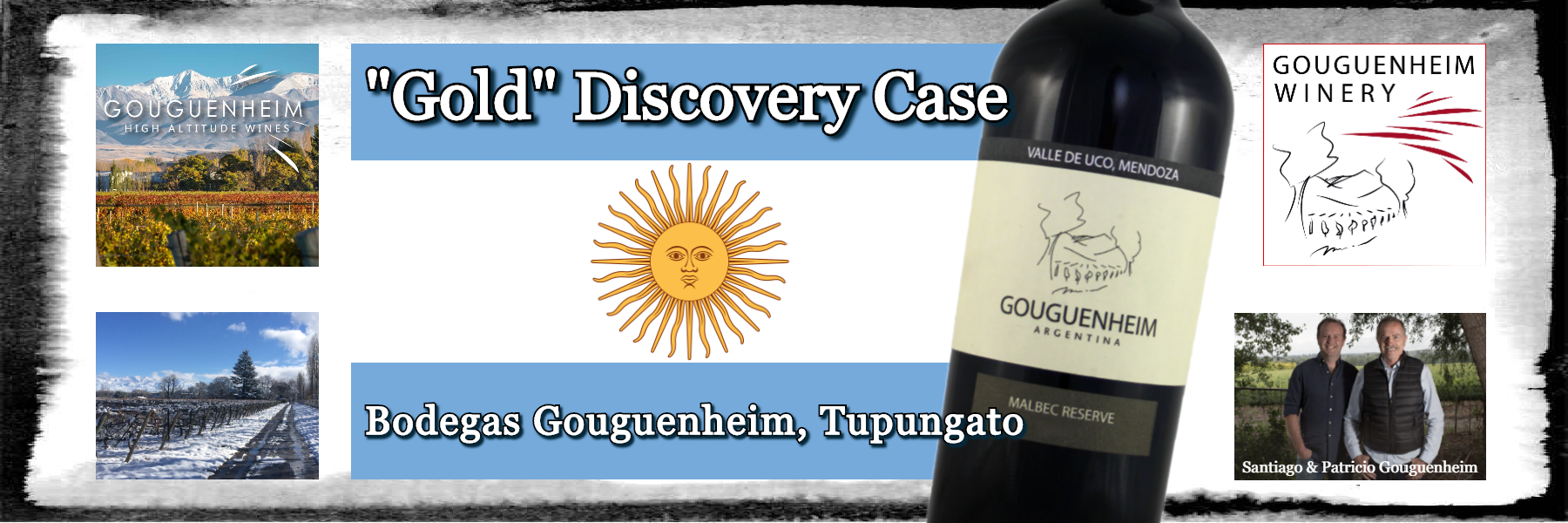
Discover more about Gouguenheim wines here
Bodegas such as Gouguenheim, in Tupungato; Zuccardi, in Altamira & Vista Flores; Karim Mussi’s Altocedro, in La Consulta, all make fantastic wines… and they’re mostly selling for only £10 - £30 a bottle.
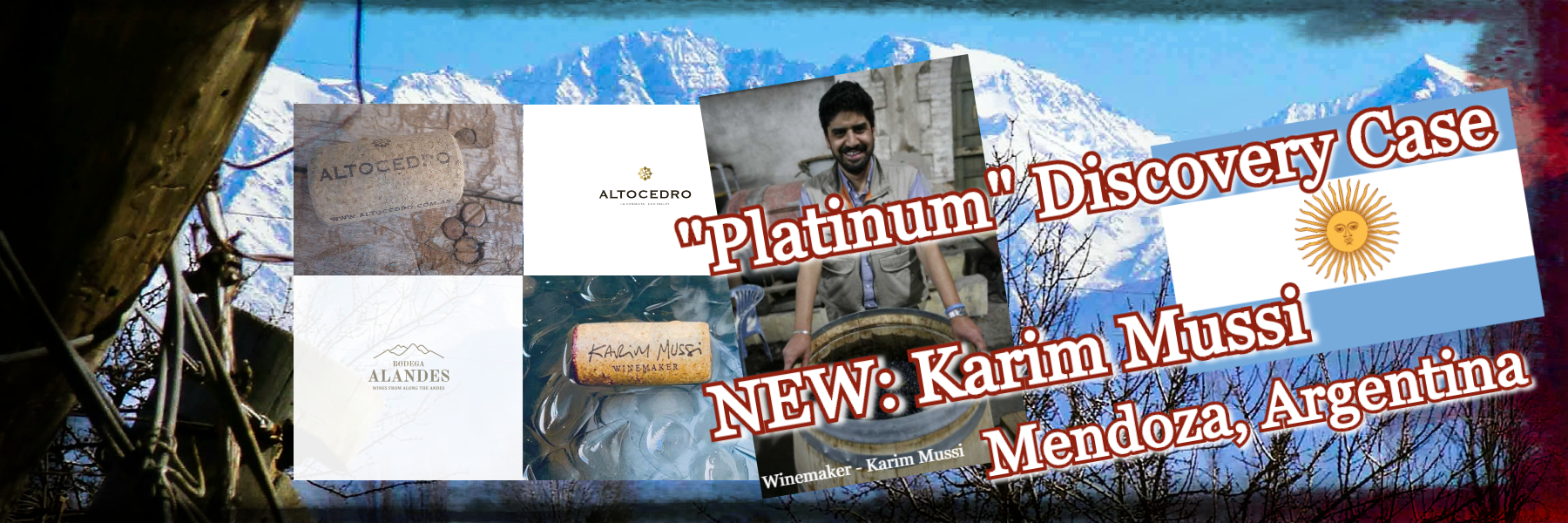
Karim Mussi Saffie, originally from Lebanon, started the Altocedro operation in 1999 and his “Old Vine” Reserve Malbec has rich fruit from 70 year old vines. Ageing is 18 months in French oak. A beautifully soft wine with flavours that linger on the palate. I know, a cliché, but it’s true!
Altocedro “Old Vines” Reserve Malbec – Tasting Note: A rich, dynamic wine with ripe dark fruit, plums and raisin flavours supported by well integrated tannins and bags of complexity. The finish is clean, long and balanced. Try it with braised lamb, duck confit, cassoulet, or strong cheeses like Blue Stilton.
Also, he works with Bodega Alandes, making red and white wines utilising the full range of Bordeaux grape varieties. His exquisite “Paradoux Blanc” is definitely not to be missed.
Alandes “Paradoux Blanc” – Tasting Note: A blend of 66% Semillon & 34% Sauvignon Blanc, a nod to the finest white wines of Pessac-Léognan, this is a texturally moreish, mineral, complex and well-balanced white with lovely weight and a touch of oak spice leading to a crisp, herbal finish. A versatile pairing that can be enjoyed with cheese-based dishes, green vegetables, fish in butter sauces, fresh herbs, langoustines, and dishes with tangy dairy ingredients.
Get a bottle each of Karim’s wines in the “Platinum” Discovery Case.
Salta/Cafayate – alongside Malbec, Salta introduces other grape varieties such as Tannat [Try Michel Torino’s “El Esteco”], which is more often found in Uruguay, rather than Argentina; Bordeaux’s Cabernet Franc and the ancient, Criolla Grande which is grown in some of the most extreme, high-altitude sites in the country (3000 metres). Agustin Lanus makes a superb example of Criolla in the Calchaqui Valley.
Lanus “Sunal Ilogico Criolla” – Tasting Note: A lighter styled red that sees absolutely no oak, and no additives in its production apart from a minimal use of sulphur. It’s very aromatic and perfumed on the nose with red fruits (strawberries & raspberries) as well as a hint of dates, dry roses and subtle spice. The concentration that comes from grapes grown at high altitude shows through on the plush and richly fruited, though elegant palate – a very unique wine that, once tasted, is not easily forgotten. The weight and balance here would make it an ideal partner to wild fowl and poultry.
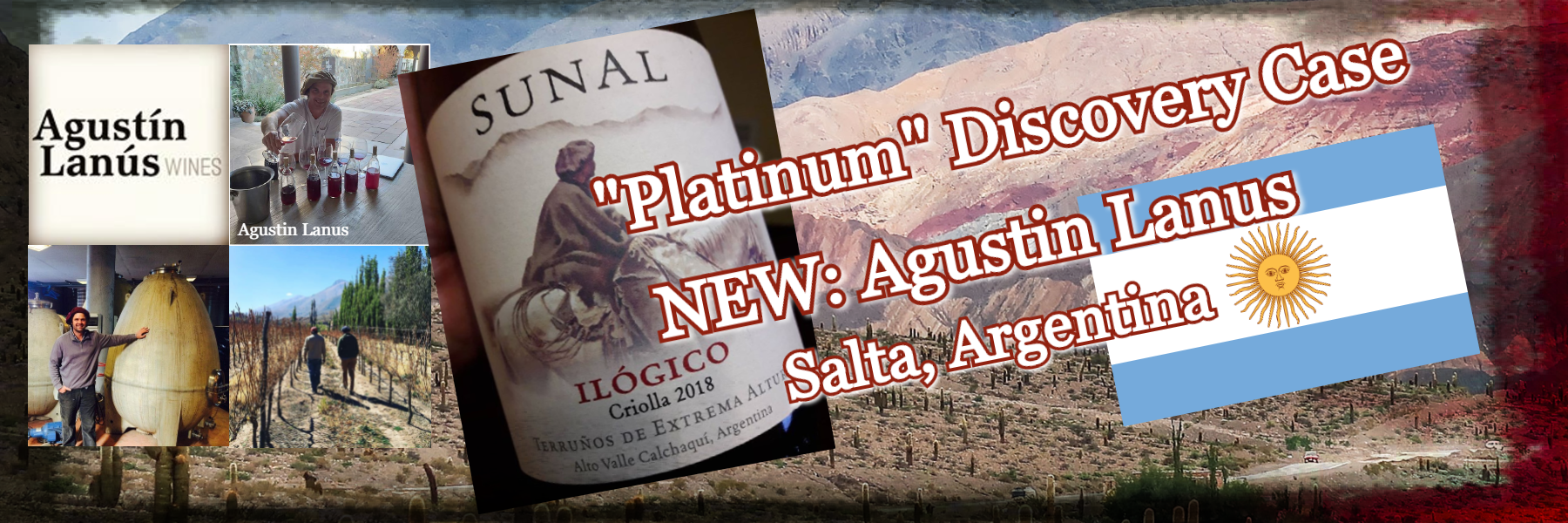
There is also a considerable planting of the white grape, Torrontés, of which, Felix Lavaque owned Quara Estate (Calchaqui Valley, Cafayate) has some of the freshest examples in both oaked and unoaked styles. With the company’s 140 years’ experience of grape growing behind them, the winemakers, Jose Luis Mounier & Mariana Paez are working wonders with this variety, particularly with the single vineyard wine, “La Esperanza”, whose vines were planted over 60 years’ ago.
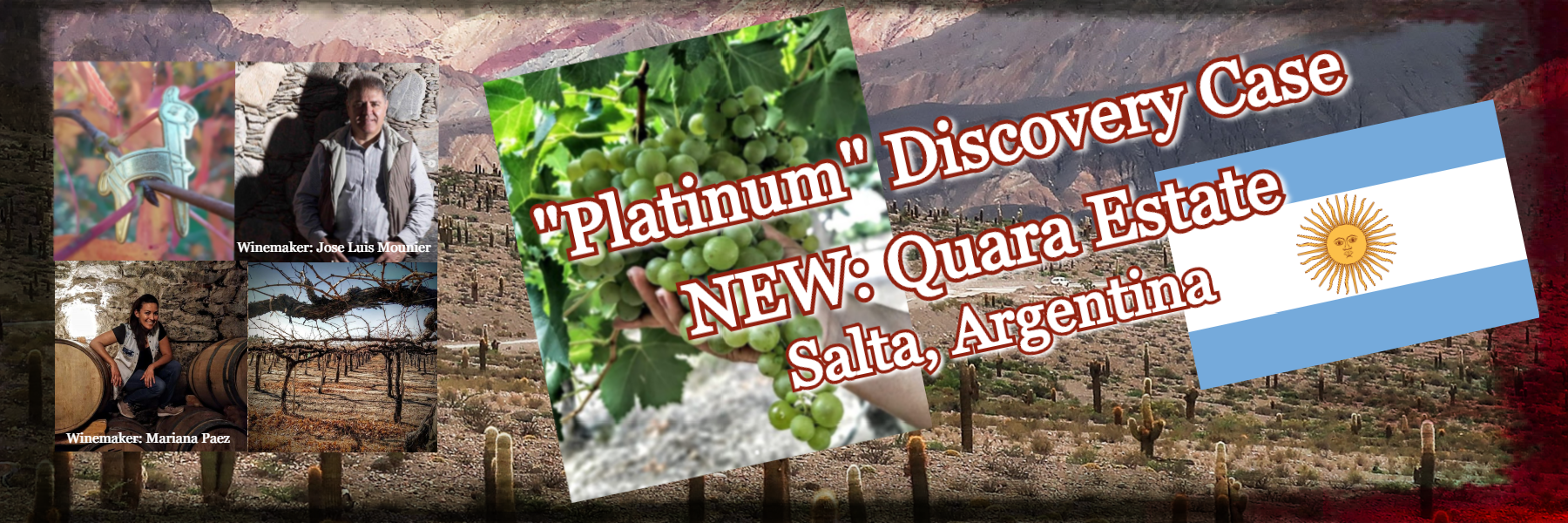
Quara “La Esperanza” Torrontés - Tasting Note: Bright, pale yellow colour with greenish hues. Aromatic, showing white floral notes and hints of white peach & exotic fruit. In the mouth, this Torrontés is delicate yet complex and intense, with a smooth, textural mouthfeel from 8 months of lees ageing and a subtle hint of vanilla, provided by the fermentation in French oak barrels. Perfectly matches with langoustines, poached brill or grilled turbot.
Malbec is also produced to a very high standard in Salta with the highly prized, biodynamic wines of Colomé hitting the heights. If I just had a single bottle of all these top wines… I’d be broke.
Well, for far less money, you can try the natural, low-sulphur, minimal intervention “Sunal Salvaje Pucara” from Lanus. It’s never seen oak and it definitely doesn’t need any. Highly recommended!
Lanus “Sunal Salvaje Pucara” - Tasting Note: The Salvaje Malbec draws attention with a deep black colour that darkens the glass. In the mouth, cranberry and raspberry are the prominent fruits as well as complex notes of beetroot and fig jam. The palate is full and expansive with juicy acidity and silky tannins, pure fruit and expression of terroir, without wood. Drink with fillet of beef, or lean game cuts such as loin of venison.
Patagonia – In the south, on the windswept, Atlantic coast, at Mar del Plata, Trapiche (Costa y Pampa) now has a new venture producing Albarino whites which, hopefully, will replicate the success of the Uruguayan examples from Garzon, to the north. Most of Patagonia’s vineyards are situated far away from the scenic, glacial, mountains and lakes, with the main area being Rio Negro (at latitude 39° south). Here, the most famous name is that of Noemia. Stunning, but very expensive examples of both Malbec and Semillon are made by Hans Vinding-Diers. A very French influenced style, but it shows the potential of the area that other winemakers must try to emulate in their wines.
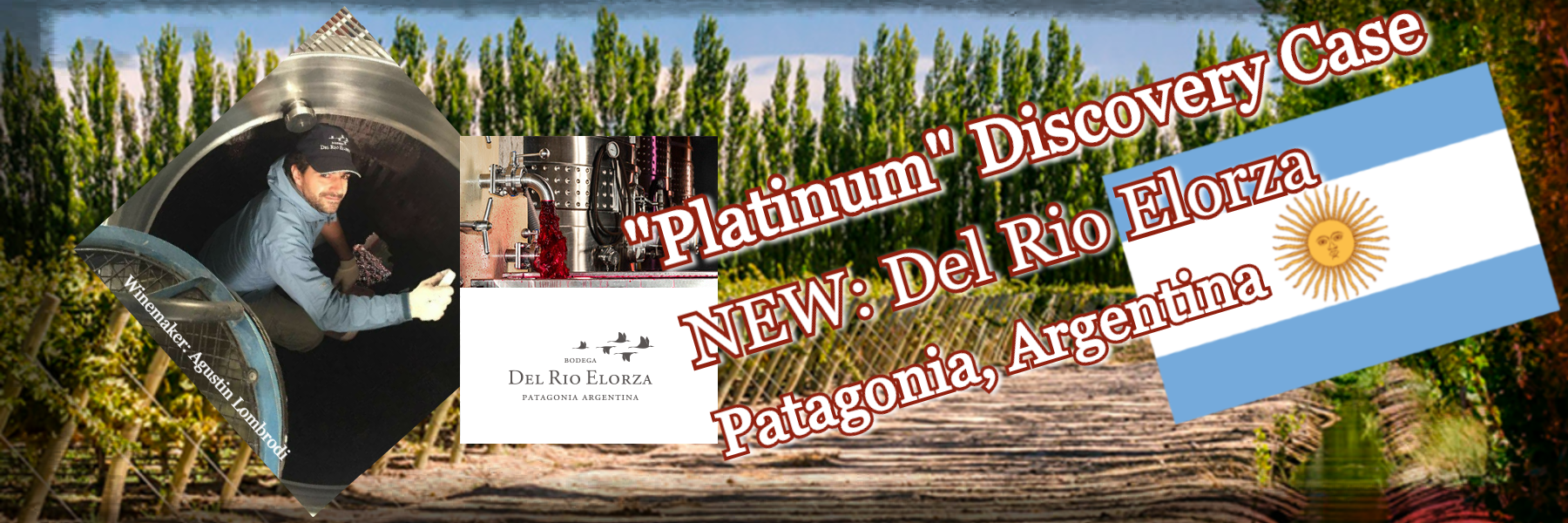
In the region, near the town of Neuquén, the excellent wines of Del Rio Elorza, including their new, award-winning “Tacito” Pinot Noir were, until earlier this year, made by talented, young winemaker, Agustin Lombroni. Rated 94/100 points by Tim Atkin MW, it’s another wine that performs to a very high standard when compared to pricier wines from neighbours, Chacra.
Del Rio Elorza “Tacito” Tasting Note: Attractively perfumed with spices, wild raspberry, strawberry and a complex mineral character on the nose; fresh acidity, an intense core of red plums and juicy berries on the elegant and refined palate lead to a deeply long and satisfying finish. Pair with pasta with mushroom sauce, partridge, cheeses of all kinds, truffles.
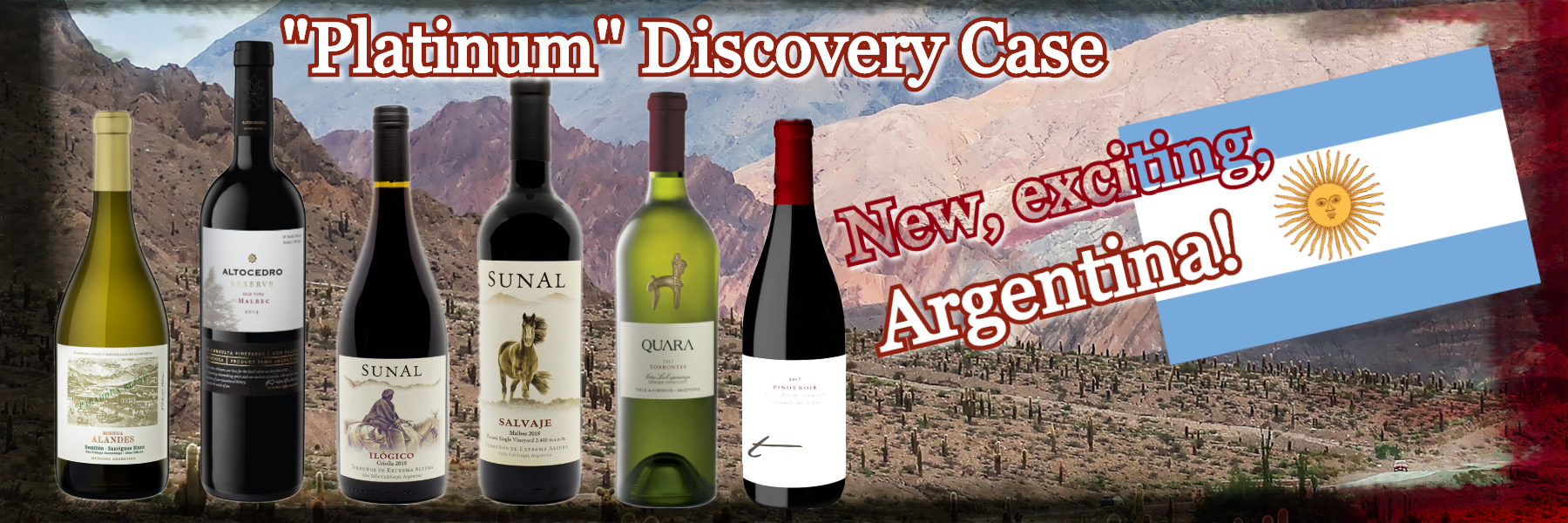
Here at Frazier’s we’ve put together two special “Discovery Case” selections that highlight the quality and value of wines from Argentina’s exciting winemakers.
The “Platinum” Discovery Case contains a bottle each of the above six wines from Karim Mussi, Agustin Lanus, Mounier/Paez and Agustin Lombroni:
Buy Argentina “Platinum” Discovery Case for £126 SOLD OUT

The “Gold” Discovery Case contains a 6 bottle selection of wines from Gouguenheim, our favourite, Mendoza Malbec Masters!
Buy Gouguenheim “Gold” Discovery Case for £65 SOLD OUT
Now that the wine is sorted out, you need to start making those tasty, little snacks to go with it. Fire up the oven and salute Argentina: ”Viva la empanada!”
